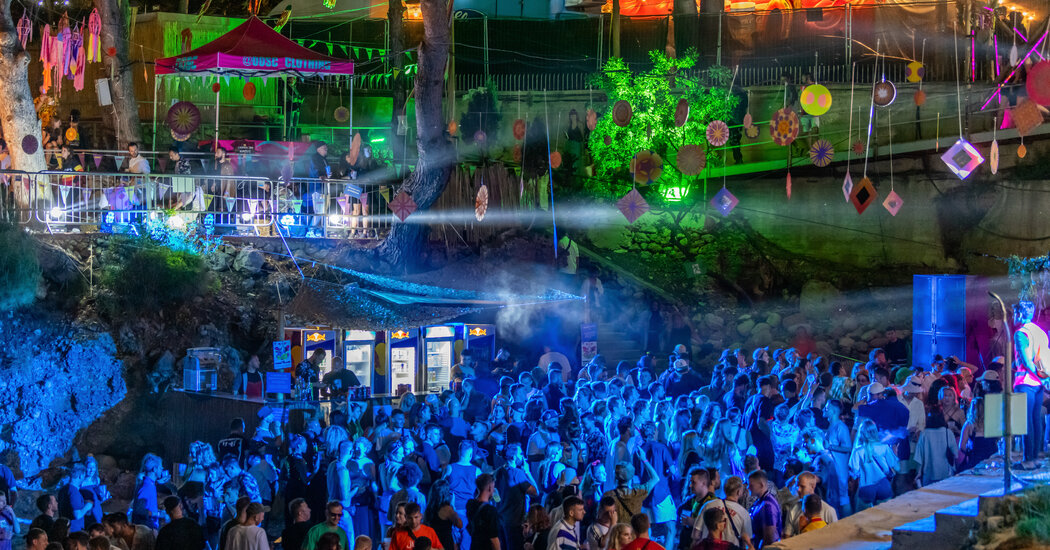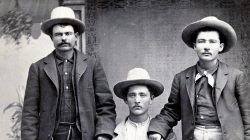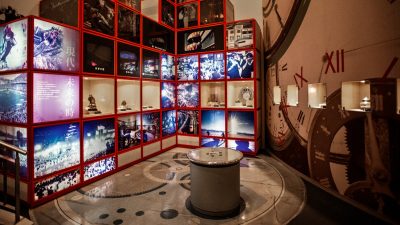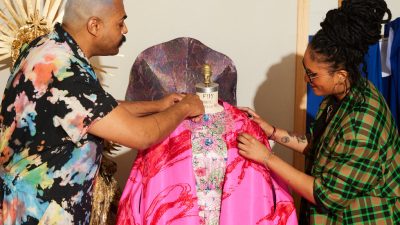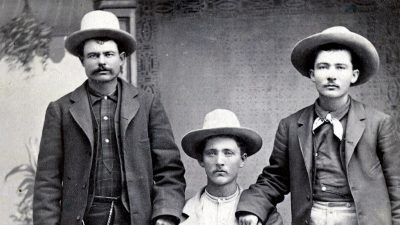More than a dozen sweaty people in various states of undress giggled as a capoeira instructor directed us to crawl around on the floor. Make eye contact, he told us as we tried to follow the flow of one another’s bodies. But it was hard not to stare at the sparkling blue Ionian Sea.
On one side of an open-air pavilion in Dhermi, a village on the Albanian Riviera, those waters glimmered under the summer sun, free of the yachts that crowd the Croatian and Greek shorelines to the north and south. On the other side, palm trees dotted the landscape. Behind them loomed the lush, green Ceraunian Mountains.
A sound check interrupted the class, an abrupt reminder of the larger reason we capoeira novices had gathered: Kala, a weeklong music-and-wellness festival. I was part of a crowd of about 3,500 mostly young people, resplendent in transparent flare pants, crop tops and cowboy boots, who had descended on Dhermi in late May and early June to sway and spin in the moonlight, hypnotized by the beats, and to pack our days with Kundalini yoga, breath work, massage and capoeira classes.
Across four stages, D.J.s like Hunee and Antal, CC:Disco!, Grace Sands and Daphni performed nightly, spinning techno and electronic beats mixed with funk, disco, jazz and more. A fifth stage, open during the daytime, beckoned from Gjipe, a canyon with soaring red cliffs, a short, scenic boat ride away.
In Dhermi, restaurants served fresh, delicious seafood and drinks at reasonable prices. Kala’s weeklong packages, which included tickets and accommodations, started at $370. (Similar U.S. festivals this year charged about $200 to $400 for a two- or three-day ticket, without lodging.) Residents joined in the fun, blasting their own music from bars, cars and balconies at night. And in the morning, some hung-over revelers were surprised to find themselves face to face with wandering goats on the village streets.
“I’ve gone from Ibiza, which got really built up, to Croatia, which got really busy. And I’ve spent a lot of time in India, and now Goa is super busy, too. And Greece is so expensive now,” said Annabel Turbutt-Day, 38, a corporate affairs director from London who drove to Kala from Tirana, Albania’s capital, with her partner and three friends. “Albania is still a little bit undiscovered, and a bit more affordable.”
From hermit state to hot spot
Since its debut in Albania in 2018, Kala has helped drive a boom in international tourism in Dhermi. Three more events have joined Dhermi’s summer dance card, with support from Mainstage Festivals, the company that runs Kala, including the upcoming Ion Festival, which takes place there from Sept. 6 to 13. The tourism season in Dhermi, which used to last about six weeks, now runs from the end of May through September.
Dhermi’s landscape was integral to Kala’s appeal: The beaches where people sunbathed during the day turned into parties that lasted till sunrise — and the cycle repeated every day.
Each open-air stage was its own little world — a cozy cove, a platform jutting into the sea, a vast space surrounded by palm trees. When I got tired of bobbing my head to the music in one spot, I could weave down the street through shouting, laughing festivalgoers and slip into a different crowd swaying to a different set.
Spontaneous parties formed in the streets, too. One evening, after hours of dancing, I devoured a slice of pizza while watching a trio of locals and visitors join hands and spin in a circle, first to Albanian songs and then to Justin Bieber’s “Sorry.”
Dhermi’s rising popularity has mirrored Albania’s as a whole. In 2022, a record 7.5 million people visited the country, spending around $3.1 billion, compared with 6.4 million and $2.4 billion in 2019, according to the Ministry of Tourism and Environment. And in the first three months of 2023, Albania experienced a 54 percent jump in visitors compared with the same period in 2019, according to the World Tourism Organization.
Many of those tourists head straight for the resort towns and beaches of the Albanian Riviera, which are drawing European sun-and-sea seekers who find the Greek island of Corfu and Dubrovnik, Croatia, too expensive and crowded. On Instagram and TikTok, influencers compare Albania’s seascape to that of the Maldives or Bali.
At the same time, history buffs are flocking to Albania’s ancient Greek and Roman ruins, Ottoman-era architecture and the tens of thousands of repurposed concrete bunkers built by Enver Hoxha, who ruled the formerly Communist country with an iron fist for four decades. UNESCO World Heritage sites like the prehistoric ruins of Butrint and deep, ancient Lake Ohrid add to the attractions.
Outdoorsy types come to bicycle along the wild Vjosa River and hike in the Albanian Alps. Nearly 300 government-certified agritourism operators offer farm tours, wine tastings and homemade meals at properties growing cherries, walnuts, plums, quince and more.
Today’s tourist-friendly environment stands in sharp contrast to the Albania of the early 1990s as it emerged from four decades of isolation as one of the poorest countries behind the Iron Curtain. An economic crisis and a near descent into civil war followed. In early 1997, during a popular uprising, an estimated 550,000 weapons were looted from armories and at least 2,000 people died as government forces cracked down and insurgents battled. The United Nations finally sent in a multinational force to restore order. But all this left Albania with a reputation as a crime-ridden, dangerous country.
“The image of Albania was not the real one,” said Mirela Kumbaro, the country’s minister of tourism and environment. “It was only the bad parts.” Now, Albania want to show its “real face,” she said.
“Kala is one of our best ambassadors,” said Ms. Kumbaro, who had dropped by the festival for a news conference, following in the footsteps of other officials, including Prime Minister Edi Rama, who showed up to the first Kala in 2018 and later sent a pallet of free beer.
Gratitude and growing pains
Development in the Dhermi area has accelerated at a breakneck pace: Half of the adjacent village of Drymades seems to be a construction site. The influx of foreign visitors to a place that only a few decades ago was sealed off to the world has brought both prosperity and challenges.
“It’s been a 100 percent transformation,” said Erjon Shehaj, 46, whose family opened a 10-table restaurant in Dhermi in 2016. “When we started, there was nothing.” Today, they own and operate the Empire Beach Resort, a luxury hotel on the same land where the small restaurant once stood. The resort hosted the biggest stage of the festival and was booked solid all seven days.
“I’ve never encountered so many tourists in Albania,” said Anisa Koteci, 33, a lawyer, who was born in the country then emigrated with her family to London when she was 8. Returning to Albania for Kala for the first time in four years, she said, has been “a bit of a shock to the system.” The abundance of foreign visitors made her excited and happy, she said, but she also worried that Albania might become known as just a party destination. She called the wave of tourism a “stress test” for her homeland.
In Dhermi, the electricity or water was sometimes turned off at hotels without warning, and bathrooms in restaurants and bars were left uncleaned for long stretches. On the second day of the festival, one local shopkeeper wiped her brow and grumbled as she surveyed an endless line of impatient bathing-suit-clad tourists waiting to buy chips, water, beer and sunblock. She was running the grocery store and the adjacent currency exchange alone, she explained, because her brother had stayed up all night registering local SIM cards for tourists.
The flood of visitors is also raising fears about possible harm to the region’s flora and fauna. In the city of Vlore, about an hour’s drive from Dhermi, an airport construction project the government promotes as a way to bring more tourists to the Albanian Riviera has faced protests from environmental groups that say it could endanger sanctuaries for birds like flamingos and pelicans.
Tomi Gjikuria, 34, an entrepreneur and a D.J. who grew up in Dhermi, said he was happy with all the new business and hoped for more visitors, but wondered how all the new construction would affect the landscape.
“When I was a child, there was no tourism,” said Mr. Gjikuria, who operates a campsite called the Sea Turtle Camp on land that his family owns in Drymades.
“I have 5,000 square meters where I put a campsite,” he said. “I could have built a casino, but I don’t want to cut down the trees.”
A spirit of hospitality
Despite all the challenges of development, residents of Dhermi have kept the welcome mat out — even if it sometimes has had a few wrinkles.
Alan Crofton, the manager and director of Mainstage Festivals, recalled the fall of 2017, when he and Rob Searle, Kala’s creative director, went to Gjipe Canyon to ask the owner of a local campsite if they could use its beach during Kala. The man they met insisted that before they agreed to anything, they needed to break the ice by toasting each other with a shot of raki, a local liquor. One shot turned into several, until finally the man told Mr. Crofton and Mr. Searle — by then quite buzzed — that he would lease them a space for the festival, Mr. Crofton said.
But when Mr. Crofton and Mr. Searle returned several months later, they found out that their raki-toasting host was not actually the landowner. He was the security guard who looked after the campsite in the winter.
Andrea Kumi, 47, founded Havana Beach Club, a place that helped draw some of the area’s first waves of tourists, after moving to Dhermi, his father’s hometown, when he was 24. Mr. Kumi, who grew up in Vlore and Athens, began inviting world-famous D.J.s to perform at the club about 15 years ago.
Today, besides the Havana Beach Club, Mr. Kumi owns two other restaurants. As the area continues to change, Mr. Kumi said, everybody is trying their best to be gracious and helpful hosts. As an old saying in Albania goes: “Our house belongs to God and guests.”
He illustrated this point with a story. In 2009, Mr. Kumi persuaded the Dutch D.J. Tiësto to perform in Dhermi. There were no luxury hotels, so, eager to please, he rented a three-story, 80-foot yacht for Tiësto to sleep on, but the D.J. started feeling seasick as soon as he boarded.
All the hotel rooms in the area were booked with the thousands of guests who’d come to see Tiësto perform, so Mr. Kumi offered up his own bedroom in his family’s house in the hills. Tiësto accepted, and the next day, Mr. Kumi said, the D.J. joined his parents and nephew for homemade pancakes.
Follow New York Times Travel on Instagram and sign up for our weekly Travel Dispatch newsletter to get expert tips on traveling smarter and inspiration for your next vacation. Dreaming up a future getaway or just armchair traveling? Check out our 52 Places to Go in 2023.
Sumber: www.nytimes.com
